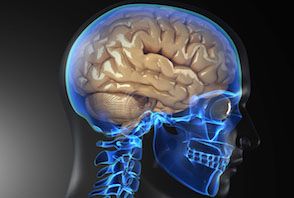Everolimus/Chemoradiation Fails to Improve PFS in Newly Diagnosed GBM
Adding everolimus to chemoradiation did not have a significant treatment effect for patients with newly diagnosed glioblastoma, according to results from the phase II NRG Oncology RTOG 0913 trial.

Adding everolimus (Afinitor) to chemoradiation did not have a significant treatment effect for patients with newly diagnosed glioblastoma (GBM), according to results from the phase II NRG Oncology RTOG 0913 trial.
The progression-free survival (PFS) was 10.2 months for patients assigned to chemoradiation with temozolomide (Temodar) compared with 8.2 months for those assigned to the same regimen plus everolimus (HR, 1.15; 95% CI, 0.82-1.6;P= .79).
In fact, patients treated with the mTOR inhibitor experienced a significant increase in grade 4 toxicities, including lymphopenia and thrombocytopenia, as well as treatment-related deaths.
“The combination of everolimus with standard radiation therapy and [temozolomide] led to increased toxicity and no clinical benefit in patients with newly diagnosed GBM,” first author Prakash Chinnaiyan, MD, professor of radiation oncology, central nervous system service chief, director of tumor metabolism, Oakland University, and colleagues wrote. “As we were not able to demonstrate a clinical benefit with this regimen, this study definitively establishes the lack of efficacy of mTOR complex 1 inhibition in glioblastoma using rapalogs, serving as a framework to develop novel strategies for targeting this oncogenic pathway.”
Adults with centrally reviewed newly diagnosed, unifocal, supratentorial GBM were included in the study. Eligible patients had a Karnofsky performance status ≥70 and had received no prior chemotherapy or treatment with an mTOR inhibitor, and had never undergone radiation to the head or neck area, except in the case of T1 glottic tumors.
Investigators administered 60 Gy of intensity modulation or 3D-conformal radiation therapy in 30 fractions of 2 Gy each. Patients simultaneously received 75 mg/m2of temozolomide daily. Adjuvant temozolomide was administered at 150 mg/m2to 200 mg/m2on days 1 to 5 of a 28-day cycle for up to 12 cycles starting 4 weeks after the completion of radiation therapy.
From December 2012 to September 2016, patients were randomly assigned to receive either standard therapy (n = 83) or standard therapy combined with 10 mg of daily everolimus during concurrent chemoradiation and adjuvant temozolomide (n = 88).
Sixty-four (77.1%) of the patients in the control arm went on to receive adjuvant temozolomide, compared with 53 (60.2%) in the experimental arm. The median number of adjuvant cycles for patients assigned to receive everolimus was 4, compared with 6 cycles in the control arm.
Median overall survival (OS) time was 21.2 months versus 18.7 months in the experimental arm. The HR for OS was 1.67 in favor of the control arm (95% CI, 1.14-2.45;P= .008).
MGMT promoter methylation status was available for 78.3% of patients in the control arm and 71.6% of patients in the experimental arm. The median survival time for patients in the control arm who had MGMT promoter hypermethylated tumors was not reached and was 18.6 months in unmethylated tumors (HR, 2.05;P= .06), compared with 18.4 and 14.2 months, respectively, in patients who received everolimus (HR, 1.48;P= .2). Multivariate analyses showed similar results, which suggests that there is no significant interaction between survival outcomes and either treatment or MGMT status.
Investigators noted a significant increase in grade ≥3 adverse events (AEs) in the everolimus group compared with the control arm (80.0% vs 42.3%;P<.0001). Fourteen patients (17.9%) in the control arm experienced a grade 4 AE and 1 (1.3%) experienced a grade 5 AE. In contrast, 26 patients (30.6%) in the experimental arm had a grade 4 event and 10 (11.8%) had a grade 5 event.
Most grade 4 AEs in the experimental arm involved bone marrow suppression, including lymphopenia (11.8% vs 3.8%) and thrombocytopenia (16.5% vs 5.1%). Of the 10 grade 5 AEs in the experimental arm, 4 eventsrespiratory failure, lung infection, scrotal infection, and meningitis—were deemed to be definitely, probably, or possibly related to protocol treatment, compared with 1 grade 5 event (sepsis) in the control arm.
Reference:
Chinnaiyan P, Won M, Wen PY, et al. A randomized phase II study of everolimus in combination with chemoradiation in newly diagnosed glioblastoma: results of NRG Oncology RTOG 0913.Neuro Oncol. 2018;20(5):666-673 doi: 10.1093/neuonc/nox209.
Investigators also observed an expected increase in grade 1-3 hypertriglyceridemia in the experimental arm (n = 53, 62.4%) compared with the control arm (n = 16, 20.5%).
TTFields Increases Time to Progression in Patients With Brain Metastases From NSCLC
March 27th 2024Findings from the phase 3 METIS trial found that tumor-treating fields were able to significantly improve time to intracranial progression in patients with brain metastases from non-small cell lung cancer.
Read More